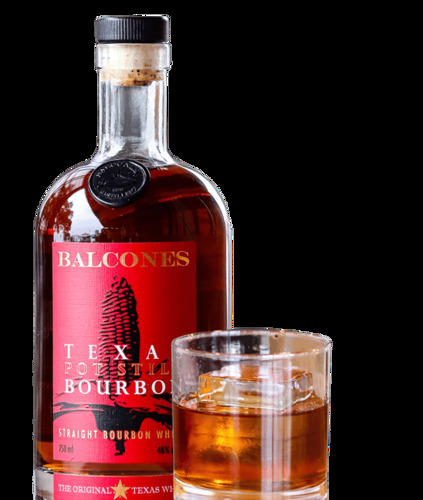
Top 5 Non-Kentucky Bourbons: Who’s Drinking This Stuff, and Should You Throw Your Money at It?
Oh, you thought bourbon had to be from Kentucky to be any good? How adorably traditional of you. Welcome to the modern era, where “bourbon” can come from any state that thinks it’s cool enough to slap a label on a bottle and charge you $60 for it. So let’s break down five non-Kentucky bourbons, and see if you’re really getting your money’s worth—or if you’re just buying into some well-marketed nonsense. Spoiler: it’s mostly the latter.
1. Balcones Texas Bourbon (Texas)
Distillery Location: Waco, Texas
Who’s Buying This?
Texans, obviously. And by Texans, I mean people who are still riding the high of “everything’s bigger in Texas” (including their whiskey). If you’re into big flavors, big personalities, and everything being bigger in general, this is the bourbon for you. Outside of Texas, it’s also popular with people who think “craft” means “small batch” and who will tell you how “innovative” Balcones is, even if they don’t really know what “innovation” in whiskey means.
Is It Worth Investing In?
Well, if you want to own a bottle of bourbon that tastes like it was aged in a leather boot and charred under the Texas sun, go ahead. Balcones is bold, brash, and totally unapologetic—just like Texas itself. As for investment? Don’t count on it. Sure, it might make for an interesting shelf piece, but don’t expect this to become the next Pappy Van Winkle. This is the kind of bottle you’ll impress your friends with at a BBQ, but it’s not exactly going to increase in value unless you’re the only person on the planet who still thinks Waco is cool.
2. Hudson Baby Bourbon (New York)
Distillery Location: Gardiner, New York
Who’s Buying This?
This one’s for the Brooklyn crowd, obviously. You know the type: they’re the ones wearing artisanal beanies while sipping organic coffee, lecturing you about the benefits of “small batch” everything. If you’re the sort of person who wants to seem like they know a lot about whiskey but can’t name a single distillery in Kentucky, then Hudson Baby Bourbon is definitely for you. It’s the whiskey you drink when you want to be seen drinking whiskey, but not necessarily drinking something that tastes like bourbon should.
Is It Worth Investing In?
Is Hudson Baby Bourbon a solid choice for a collector? Um… no. It’s cute. It’s quirky. It’s about as close as New York can get to making “bourbon” without it being a complete travesty, but let’s face it: it’s not changing the game. It’s fine for your Brooklyn apartment or for that Instagram shot of you looking “classy” on your urban balcony, but don’t expect it to ever become a valuable collectible. Honestly, you’re better off just buying a bottle of Buffalo Trace and saving yourself the whole “hipster bourbon” charade.
3. St. George Breaking & Entering Bourbon (California)
Distillery Location: Alameda, California
Who’s Buying This?
You know who buys this: people who own one-too-many plaid shirts, and who talk about “innovation” in whiskey the way a tech bro talks about the “next big thing in AI.” This bourbon is essentially the whiskey equivalent of a Silicon Valley startup: it looks cool, but whether it actually delivers is a whole other story. It’s also the drink of choice for those who want to say they’re drinking “craft” but don’t want to get bogged down in things like tradition or authenticity.
Is It Worth Investing In?
Breaking & Entering is an experimental blend that’s more about “craft” than about making something people actually want to drink. It’s not bad, but it’s not really great either. As for investing? If you want to spend $50 on a bottle that’s just going to sit on your shelf and gather dust until you give it away to a friend who loves all things California, then sure. But if you’re thinking this will one day be worth something, don’t hold your breath. This is just a flashy bottle for when you want to impress your friends with your “eclectic taste,” but don’t plan on passing it down to your grandkids.
4. Michter’s Bourbon (Pennsylvania)
Distillery Location: Louisville, Kentucky (but distillery heritage hails from Pennsylvania)
Who’s Buying This?
This one’s for the serious whiskey drinkers—those who want to seem like they know everything about bourbon but also don’t want to be too mainstream. You can spot them at high-end cocktail bars, ordering a Manhattan while smugly saying, “Oh, I prefer Michter’s over anything from Kentucky.” It’s the kind of whiskey that lets you drink with your pinky up without anyone actually questioning your taste. It’s fancy, it’s expensive, and if you drink it, you’ll definitely get to lecture people about “terroir” and how Pennsylvania’s climate is perfect for bourbon production (even if it’s not).
Is It Worth Investing In?
Now we’re talking. Michter’s is a serious bourbon, and while it’s technically not from Kentucky, it has earned a respectable reputation over the years. This one might hold its value over time, especially since it’s becoming more difficult to find. If you can snag a bottle at retail price, it could be worth holding onto for a few years. But don’t kid yourself—it’s not going to be worth a small fortune like a bottle of rare Pappy, but it’s solid enough for both sipping and reselling if you really feel the need to cash in on your “vintage” find.
5. Smooth Ambler Old Scout Bourbon (West Virginia)
Distillery Location: Maxwelton, West Virginia
Who’s Buying This?
People who want to appear knowledgeable but don’t want to dive too deep into the bourbon world. Smooth Ambler is the whiskey you buy when you want to sound fancy at a party but don’t actually know anything about what makes a good whiskey. It’s got that “small batch” vibe, which is code for, “I totally know what I’m doing with my drinking habits, but also, I’ll never be a bourbon snob.”
Is It Worth Investing In?
In short: No. Smooth Ambler is what happens when you make a good but not great bourbon and slap a “craft” label on it. It’s fine if you’re looking for something a little different, but don’t buy it with the hopes that it’ll appreciate in value. The only thing that’s going to increase in value here is the amount of “bourbon knowledge” you’ll gain by telling people you’ve heard of Smooth Ambler. This one’s a fun bottle to have in your collection for variety, but don’t expect it to become the next collector’s item.
Conclusion: Is Non-Kentucky Bourbon Worth Your Time (and Money)?
So, what have we learned here? Well, for one, non-Kentucky bourbons are mostly about the hype. They’re trendy, they’re niche, and they’re for people who want to say they’re drinking something “different” but don’t have the courage to fully commit to drinking something that’s actually good and traditional. If you’re just looking to look cool at a cocktail party, sure, grab one of these and strut your stuff. But if you’re serious about investing in bourbon (and not just buying into whatever buzzword is floating around), you’ll do better to stick with something that’s tried, tested, and has a proven legacy—like, you know, Kentucky bourbon. Cheers to pretending.




